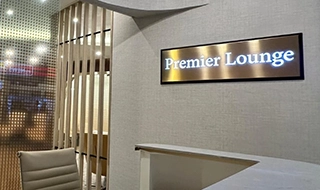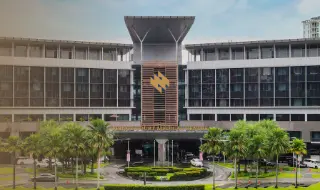Slipped Disc
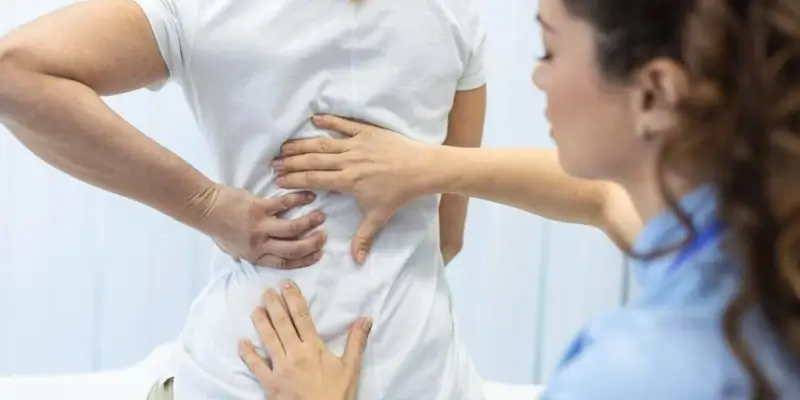
Slipped discs are often misunderstood, with myths surrounding this common spinal condition.
One of the myths is that slipped discs only affect older people, but adults of all ages can experience them, especially with poor posture or repetitive strain.
Some also believe surgery is the only treatment, though most cases are managed with physical therapy and lifestyle changes.
What is a slipped disc?
A slipped disc, also called a herniated disc or prolapsed disc, occurs when one of the soft cushions (discs) between your spinal vertebrae gets damaged.
These discs act as shock absorbers, keeping your spine flexible. Each disc has a gel-like centre (nucleus pulposus) surrounded by a tough outer layer (annulus fibrosus).
If the outer layer weakens or tears, the gel can push through, causing the disc to bulge or shift. This often happens due to ageing or improper lifting.
Slipped discs usually affect the lower back (lumbar spine) but can also occur in the neck (cervical spine).
When the disc presses on nearby nerves, it can cause pain, numbness, tingling, or muscle weakness, often worsening with certain movements or activities.
Risk Factors or Causes of Slipped Disc
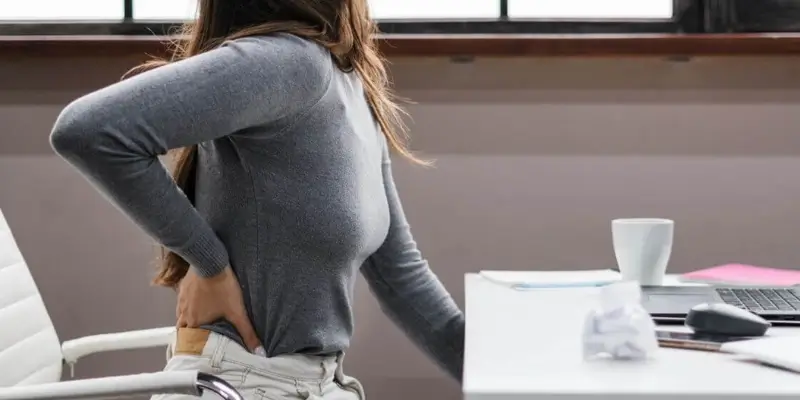
Ageing and Spinal Disc Degeneration: As we age, spinal discs naturally wear down, losing hydration and flexibility. This process, called disc degeneration, increases the risk of slipped discs, especially in those over 30. Weakened discs are more likely to bulge or rupture under pressure, often starting in the lumbar spine (lower back) due to daily strain. Certain conditions and lifestyle choices can worsen the risk, so it’s important to address these factors.
Injury or Sudden Trauma: Accidents, falls, or impacts to the spine can cause a slipped disc. For example, force from a car accident or heavy fall can rupture or misalign a disc, pressing on nearby nerves. These injuries often cause acute pain and, depending on severity, may lead to long-term spinal issues.
Poor Posture and Extended Sitting: Poor posture during long sitting periods stresses the spine and contributes to slipped discs. Slouching, leaning forward, or sitting with a curved back increases spinal pressure, leading to disc damage. This is common among desk workers without proper lumbar support. Prolonged inactivity also weakens the discs over time.
Heavy Lifting and Improper Techniques: Lifting heavy objects incorrectly—like bending the back instead of the knees—puts strain on the spine and raises the risk of a slipped disc. Twisting while lifting or using poor form repeatedly can wear out discs, causing herniation. Proper techniques, like bending the knees and keeping the load close, help avoid injury.
Obesity and Sedentary Lifestyles: Excess body weight strains the spine, especially the lower back, and makes discs more vulnerable. Obesity adds pressure, while inactivity weakens the core muscles that support the spine. Without strong muscles, the spine is more prone to injury. Maintaining a healthy weight and staying active with strength training and stretching can reduce strain and prevent disc issues.
Symptoms of a Slipped Disc
Pain and Discomfort (Localised and Radiating): A common sign of a slipped disc is pain, which can stay in the back or spread to other areas. Localised pain occurs when the disc presses on nearby nerves and is often described as dull, sharp, or aching. Radiating pain follows a compressed nerve, such as sciatica, sending pain down one or both legs. This pain often worsens with bending, lifting, or movement.
Numbness, Tingling, and Weakness: A compressed nerve from a slipped disc can cause numbness, tingling, or "pins and needles" along the affected nerve. This often occurs in the arms or legs, depending on the disc's location. Muscle weakness may also develop, making tasks like walking, standing, or gripping objects difficult. These symptoms may worsen when sitting or lying down but improve with movement.
Stiffness and Limited Mobility: A slipped disc can cause stiffness and reduced mobility in the back or neck. Pain and nerve irritation make bending, twisting, or moving difficult. Over time, the body may limit movement to avoid pain, further reducing mobility. Everyday tasks like walking, tying shoes, or lifting can become harder as stiffness increases.
Loss of Bowel or Bladder Control (Severe Cases): In rare cases, a slipped disc can cause cauda equina syndrome, where nerves at the base of the spine are compressed. This can lead to loss of bladder or bowel control or "saddle anaesthesia," a loss of sensation in areas like the inner thighs. Seek immediate medical attention if these symptoms appear, as this is a medical emergency.
Treatment Options for a Slipped Disc
Non-Surgical Treatments:
Pain Relief Medications (NSAIDs, Muscle Relaxants): Over-the-counter pain relievers like ibuprofen or aspirin are often the first treatment for a slipped disc. These help reduce inflammation, ease pain, and improve mobility. Muscle relaxants may also be prescribed for spasms. These treatments work best for mild to moderate cases and can be combined with other therapies to manage symptoms as the body heals.
Physiotherapy: Physical therapy is a key non-surgical option for slipped discs. A physiotherapist guides you through exercises to strengthen your core, improve flexibility, and correct posture, supporting the spine and reducing pressure on affected discs. Treatment includes stretching, strengthening, and posture correction. Physiotherapy helps after acute pain subsides, aiding recovery and reducing recurrence. It can also ease pressure on the sciatic nerve caused by the disc.
Chiropractic Care: Chiropractic care uses spinal adjustments to reduce pain and restore function. By realigning the spine, chiropractors relieve pressure on affected discs. This treatment suits mild to moderate cases but should only be pursued after consulting a healthcare provider.
Other Non-Surgical Therapies: Options like acupuncture, massage, and pain management injections (e.g., epidural steroids) can provide relief. These therapies aim to reduce pain, lower inflammation, and improve mobility. Injections offer temporary relief for severe cases with significant nerve compression.
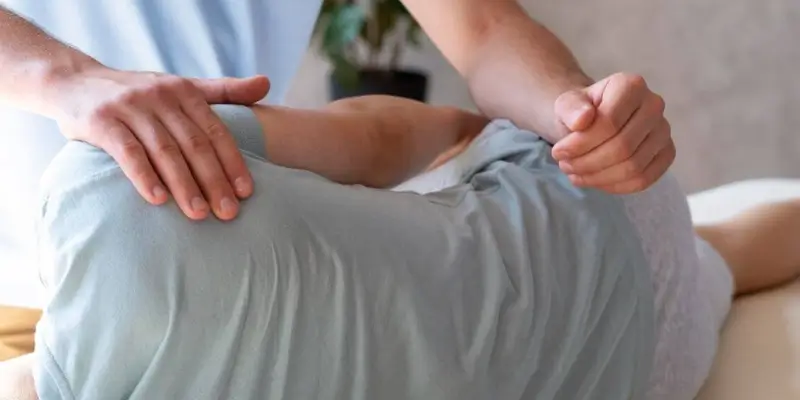
Surgical Treatments:
Microdiscectomy: If non-surgical treatments fail, a microdiscectomy may be recommended. This minimally invasive procedure removes the portion of the herniated disc pressing on a nerve. Performed through small incisions with a microscope, it minimises tissue damage and allows quicker recovery than traditional surgery. It’s often used for severe leg pain, nerve weakness, or other symptoms from disc pressure.
Laminectomy: For more severe cases, such as spinal canal narrowing (stenosis) or nerve compression, a laminectomy may be necessary. This procedure removes part of the vertebra (lamina) to relieve nerve pressure. It’s recommended when intense pain or loss of function doesn’t respond to other treatments and significantly impacts daily life.
Spinal Fusion: In rare cases where a herniated disc causes spinal instability or recurring issues, spinal fusion may be performed. This procedure permanently joins two or more vertebrae using bone grafts or metal hardware to stabilise the spine. Spinal fusion is a last resort when other treatments fail or instability poses serious risks.
Exercises for Slipped Disc Recovery
Cat-Cow Stretch: This gentle exercise improves spinal flexibility by alternating between arching your back like a cat and lowering your belly like a cow. It aligns the spine, reduces stiffness, and relieves pressure on discs and nerves. Start with 5–10 repetitions, increasing as comfortably.
Pelvic Tilts: Strengthen your lower back and core by lying on your back with knees bent and feet flat. Tilt your pelvis upward, pressing your lower back into the floor. This stabilises the pelvis, reduces disc strain, and improves posture. Begin with 10–15 repetitions, adding more as your core strengthens.
Knee-to-Chest Stretch: Stretch your lower back, hips, and glutes by lying on your back with knees bent. Pull one knee to your chest while keeping the other foot flat. Hold for 20–30 seconds, then switch. This relieves tension, reduces disc pressure, and boosts flexibility. Start with 3–5 repetitions per side, increasing gradually.
McKenzie Extension Exercises: Lie face down, propping your upper body on your forearms with hips on the floor. Push up through your arms to extend your back while keeping hips grounded. This helps reposition the disc and relieves nerve pressure. Start by holding for 10–15 seconds, increasing as you build strength.
Slipped Disc Treatment in Kuala Lumpur (KL)

Managing a slipped disc can be tough, but the right treatment can bring relief and restore mobility.
In Kuala Lumpur, Prince Court is a top choice, offering a full range of treatments in one place.
From physiotherapists to orthopaedic surgeons, we provide personalised care from experienced specialists.
Don’t let pain hold you back—contact Prince Court and start your journey to a pain-free life. Schedule your appointment today.










